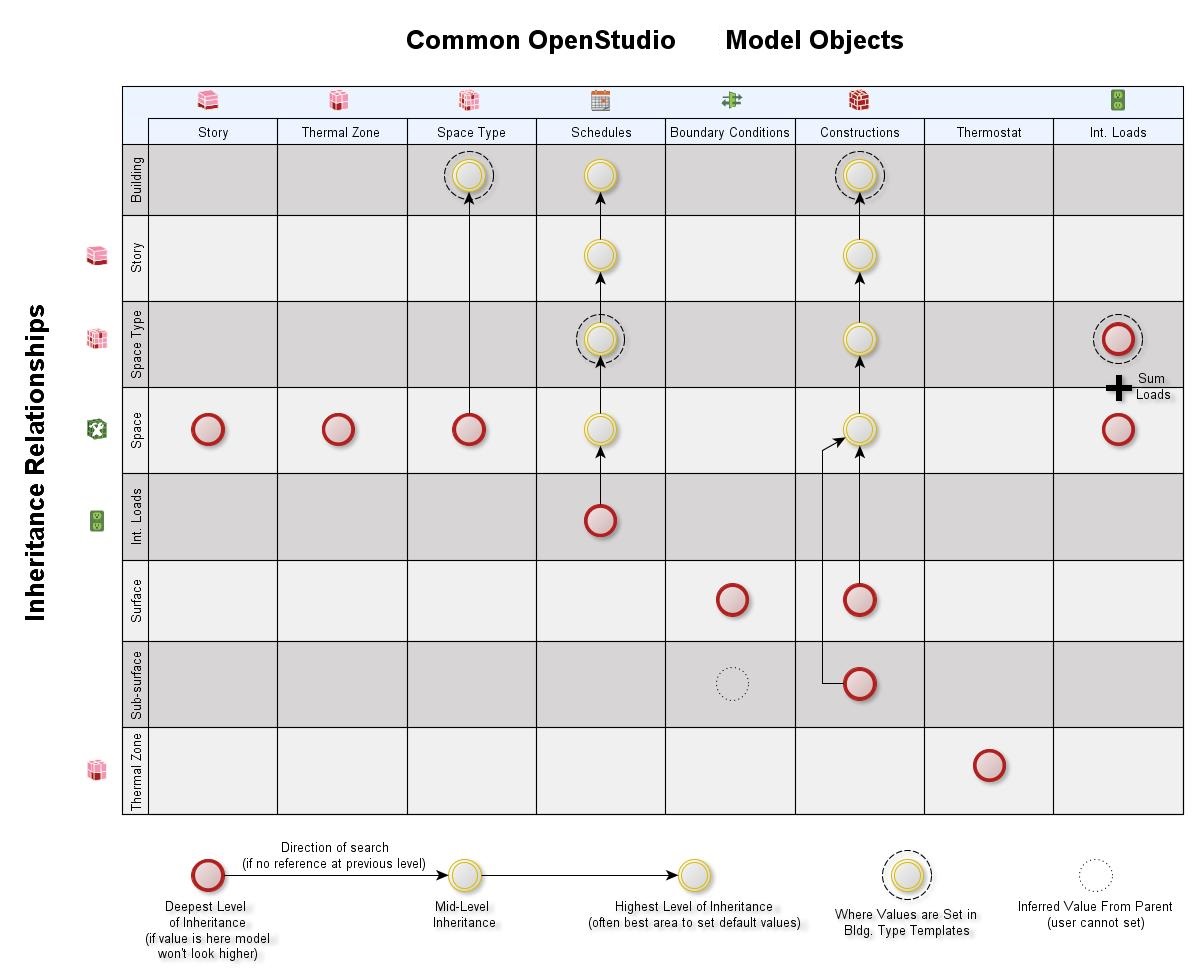First time here? Check out the Help page!
 | 1 | initial version |
See Model Object overview here, especially the inheritance section:

Basically the logic is that it starts at the most specific, and goes up to the most general. Once it finds something, it stops going up.
 | 2 | No.2 Revision |
See Model Object overview here, especially the inheritance section:

Basically the logic is that it starts at the most specific, and goes up to the most general. Once it finds something, it stops going up.
Edit:
Let's take a simple use case to illustrate how you would set up a (simple) real world building. Let's say you have a 10-story building, with a basement, and you have stairwells on the perimeter of the building. All of your building has the same construction used for exterior walls, except the basement, and the stairwells. For simplicity's sake, let's say the interior floor and walls are the same throughout.
You would create a construction set with all surface types (windows, interior floor, walls, exterior walls, roofceiling, etc) and apply that to the whole building. You would then create two additional construction sets:
What OpenStudio would then do:
This is how you would leverage inheritance to be able to define the constructions only where needed. You only had to the define exterior walls three times, and you only had to define the rest once (huge time saver!). I hope this clarifies it a bit.
Last, there's the case where the surface is adiabatic. In this case you need to hard assign the construction to the surface (there's a User Script in the Skechup Plugin to do that conveniently), since the construction set currently doesn't allow to define a surface type "Adiabatic".
